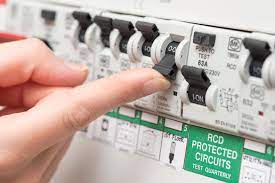Safety switches are essential for protecting properties from the risks of electrical hazards. Everything from human life to assets depends on the protection a safety switch provides in the case of an electrical malfunction. Safety switches work by monitoring the electrical flow through the circuit. If there are any irregularities in the flow of the current, the switch automatically trips and stops the power supply to the device. In the event of a power shortage, nearly every safety switch is designed to immediately cut down the power.
Here are some details that you should be aware of before choosing the right type of safety switch.
- While installing safety switches, one must be aware of the required amperage rating in order to make the right choice. Safety switches come in different amperage rating, including 30A, 60A, 100A, 200A, 400A, 600A, and 800A. This rating largely depends on the amount of power needed to run every electronic device, appliance, or equipment on the property. Generally, the points that draw more electricity need safety switches with a higher amperage rating.
- Single-phase safety switches are perfect for electrical connections (230 to 250 volts) commonly used in houses. The three-phase safety switch is an ideal match for the powerful electrical connections (450 volts and above) used at commercial establishments.
- NEMA Rating
. NEMA 1 inclusions are ideal for being used indoors to provide people protection from any contact with the live equipment.
- NEMA 3R switches are generally suitable for outdoor usage and provide a higher degree of protection against electrical faults due to external elements of rain, sleet, or ice formation.
- NEMA 4/4X is intended for both outdoor and indoor use. These enclosures protect the circuits from damage risks due to rain, hose water, splashing, or ice formation. The only difference between the “4X” and “4” enclosures is that the “4X” provides corrosion protection.
- NEMA 5/12 enclosures are designed for protecting inhabitants against any settling, airborne, or circulating dirt. It also protects against any falling, dripping, and non-corrosive liquids.
- Fused or Non-Fused
Safety switches can be combined with fuses on a circuit, inside a single enclosure. This is often referred to as a fused or fusible safety switch. This kind of switch makes it much more convenient to open and close an electrical circuit and the fuse provides protection against the over-current.
Switches without any associated fuses are known as non-fusible or non-fused safety switches. These are not capable of providing any circuit protection and are only convenient for opening and closing the circuit.
It is better to use fused safety switches because external protection from over-current devices is essential.
For more information or assistance during normal business hours, call or e-mail TPS at the phone number above. You can also complete and submit our Service Project Inquiry form.

